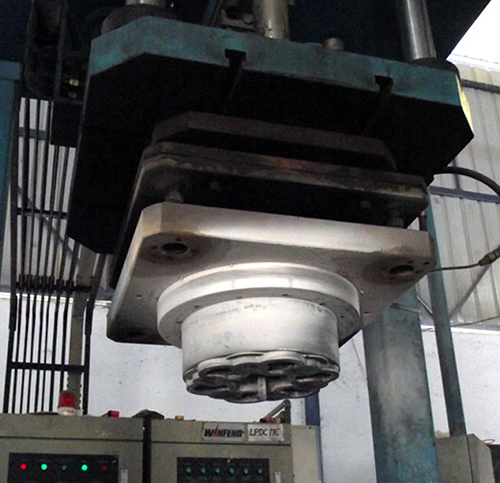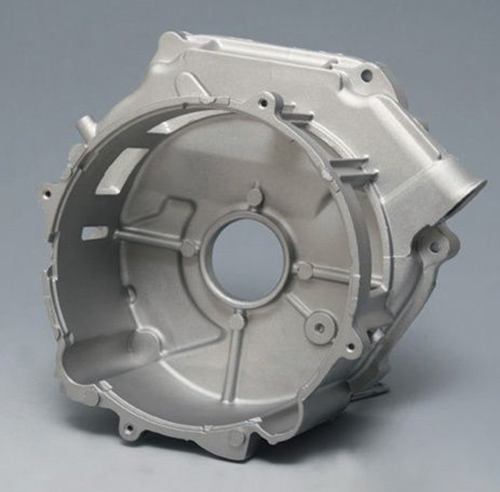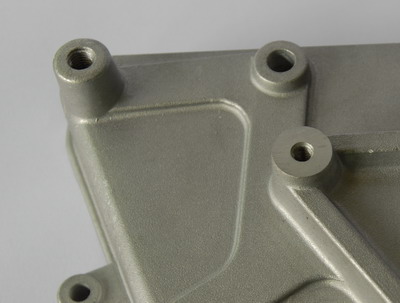Kaolin is a general term for a group of clay minerals. Its basic composition is kaolinite group and kaolinite group. It is mainly composed of kaolinite and halloysite. The content is over 90%, followed by hydromica . there are pyrite, limonite, anatase, quartz, chalcedony, alum, and sometimes a small amount of organic matter. Kaolin is widely used in ceramics, paper, rubber, plastics and refractory industries due to its excellent processability such as plasticity, cohesiveness, sinterability and fire resistance. There are three main types of genesis of kaolin deposits: weathering, sedimentary and hydrothermal alterations.
The processing of kaolin ore depends on the nature of the ore and the end use of the product. There are two processes used in industrial production: dry process and wet process. Usually, hard kaolin is produced by dry process, and soft kaolin is produced by wet process.
Dry beneficiation process
The dry process is a simple and economical process. The produced ore is crushed to 25.4mm by a hammer crusher and fed into the cage crusher to reduce the particle size to 6.35mm. The hot air in the cage crusher reduces the moisture of the kaolin from 20% of the produced water. About 10%. The ore is crushed by a centrifugal separator with a cyclone and further pulverized with a blower grinder. This process removes most of the sand and the product is commonly used in low-cost fillers in the rubber, plastics and paper industries. When used in the paper industry, the product can be used as a filler in the filler layer with an ash content of less than 10% or 12%. At this time, the brightness of the product is not high.
When the dry method requires high whiteness and the like, the product produced by Raymond mill must be subjected to dry iron removal. The dry process has the advantages of eliminating the product dehydration and dry process, reducing the loss of ash powder, short process flow, low production cost, and is suitable for drought and water shortage areas. However, in order to obtain high-purity high-quality kaolin, it is necessary to rely on the wet process.
Wet beneficiation process
The wet process includes three stages: ore preparation, beneficiation processing and product processing. The preparation phase includes operations such as batching, crushing and mashing. The mash is to mix the kaolin ore with water and dispersant in the pulverizer. The mashing operation can disperse the ore. Prepare the appropriate fine kaolin slurry for the sorting operation, and remove the large sand at the same time. The beneficiation stage may include hydraulic grading, flotation, selective flocculation, magnetic separation, chemical treatment (bleaching), etc. to remove different impurities.
The prepared slurry is firstly removed by a sputum washing tank, a float classifier or a cyclone, and then divided into two parts by a continuous centrifuge, a hydrocyclone, a hydraulic sorter or a vibrating fine screen (325 mesh). thickness of two size fractions. The fine-grained grade of the classifier is fed into HGMS (high-gradient magnetic separator) to remove iron-titanium impurities. The product is detached by stirring and scouring and then leached by iron oxide. The clay which is high enough in brightness and has good coating properties can be magnetically removed. Stripped and sent directly to the leaching operation.
After leaching, the clay mineral alum aggregation facilitate dewatering in the pulp. The bleached clay is dewatered using a high speed centrifuge, a rotary vacuum filter or a filter press. Dewatering by filter or filter press. The filter cake was redispersed into a slurry of 55% to 65% solids and then spray dried to make a loose dry product. Some of the dry product was mixed into the dispersed slurry to make 70% solids and shipped to the paper mill.
The final product, which is not selected, has low brightness and can only be obtained by magnetic separation, froth flotation or selective flocculation in the process. However, these independent operations have their own advantages and disadvantages, so the industry usually uses a combined process of two or three of these processes for the comprehensive utilization of clay resources.
High gradient magnetic separation
The dyed impurities in kaolin (such as hematite, etc.) have weak magnetic properties and can be removed by a high gradient magnetic separator. In the United States, the PEM-84 wet high gradient magnetic separator can reduce Fe2O3 in kaolin ore from 0.9% to 0.6%, and Ti2O3 from 1.8% to 2.0% to 0.8%. This high-gradient magnetic separator uses stainless steel wool as a medium. When the field strength is 1.5 to 2.0T, it consumes 270-500kw. China has carried out wet research on Hunan acid, Lingyang, Boluo and Hengling soils [3-6], and all of them have obtained good test results, especially the removal of iron and titanium in kaolin by vibration high gradient magnetic separation. Very good test indicators. Hunan Leiyang kaolin See Comparative test results U.S. PEM- 84 with a high gradient magnetic separator CLY500 vibration of high gradient magnetic separator, drop from iron, titanium impurities, improve the whiteness, China high gradient magnetic The machine performance is better than the United States.
Since some impurities in kaolin portion of iron is present in the form of silicates, very weak magnetism, and titanium present in the form of rutile, the magnetic separation method is difficult to work, so the flow is usually accompanied by flotation, selective flocculation, etc. Other jobs to improve the quality of the product. In recent years, superconducting magnetic separators have been successfully applied to kaolin sorting, which not only reduces energy consumption, but also greatly increases the field strength, and the quality of kaolin concentrate is also higher. The Eriez superconducting magnetic separator features rapid magnetization and achieves the highest design field strength (5T) in 60 seconds with a short degaussing time, which greatly reduces the time required to flush magnetic impurities from the magnet during load cycling.
Its energy consumption is low, about 80% less than conventional magnetic separator, and the processing capacity is large, up to 100t/h. The United Kingdom has tested a reciprocating spiral superconducting magnetic system that is similar in design to a conventional can magnetic magnetic filter, except that it retains the superconducting magnet in an excited state during the duty cycle without switching control. Continuous operation. The 3048mm, superconducting and high gradient magnetic separator designed by Humboldt Company of Germany has simple structure, low operation and maintenance cost and good stability.
Foam flotation
The purpose of the flotation operation is to float titanium impurities from the kaolin. Since the impurity particles are extremely fine, a carrier flotation process is usually employed. The carrier mineral may be calcite or silica sand (-325 mesh), and the amount of the carrier mineral is generally 10% to 20% by weight of the kaolin, and a part of the carrier may be reused. The agents used in the flotation process include: dispersant sodium silicate, pH adjuster amine hydroxide and caustic soda collector Tal oil, fatty acid and calcium petroleum sulfonate. However, flotation has many disadvantages. The hydrophobicization of the carrier requires a large amount of chemicals. The flotation process can only be effective at a lower concentration of the slurry, thereby increasing the cost of dewatering. The loaded body must be removed from the clay product as much as possible. Recycling in the product for recycling.
Chemicals and carrier minerals remaining in the clay are detrimental to the final product. Cundy and Yong et al. studied a flotation process that does not require a carrier and floats anatase directly from kaolin, which is characterized by the presence of dispersants (such as sodium silicate) and pH adjusters (usually amine hydroxide). Under high conditions, the high pulp concentration (40% to 60% solids) is scrubbed to remove surface dirt. At the same time, the scrubbing also disintegrates the anatase and hematite from the kaolin minerals, and then traps a small amount of activators and fatty acids. The slurry is added together with the slurry, and the anatase covered by the collector forms a selective agglomeration under high shear stirring conditions, so that the particle size is significantly increased, and the slurry after high shear stirring and slurry is diluted to 15%~ Flotation is carried out with 20% solids, and alum in kaolin can also be removed by flotation.
Selective coagulation/flocculation
At pH 8~11, selective agglomeration of iron-titanium impurities was observed by adding alkaline earth metal ions such as Ca2+ and Mg2+ to the kaolin slurry, and then selective flocculation was carried out with a weak anionic polyelectrolyte. The process requires that the slurry concentration be less than 20%, so there must be a large amount of water to be removed in the subsequent operations, and the residual flocculant also has an impact on the quality of the final product.
Selective flocculation of kaolin with high-molecular flocculant, the kaolin particles flocculate to the bottom, and the iron-titanium impurities are reddish brown in the suspension in the upper part due to the fine particles, and the upper suspension can be removed. Most of the iron-titanium impurities are removed and processed by other operations (such as magnetic separation) to obtain high-quality kaolin. Suzhou Kaolin Company has achieved good indicators by adopting a new process of selective flocculation. The use of selective flocculation and high gradient magnetic separation to treat kaolin also obtained satisfactory indicators.
Leaching
Leaching is carried out in the presence of a weakly acidic solution (pH 3 to 4) with a reducing agent (NaS2O4) to keep the dissolved iron in the Fe2+ state, avoiding the formation of Fe(OH)3, and washing it with water to separate it from the kaolin. In order to remove the dark organic matter, it can be bleached with a strong oxidizing agent (hydrogen peroxide, sodium hypochlorite, etc.), and the Suzhou Kaolin Company has obtained high-quality kaolin products by oxidative bleaching. It has been reported that treatment of kaolin with microorganisms can significantly improve the quality of the product.
Dehydration
The selected clay is stored in a slurry tank for 6-8 hours, and the pH is adjusted to 3-4, which is close to the zero point of the clay, so that the clay particles are easily agglomerated. The addition of alum to the pulp contributes to the agglomeration of the clay particles and promotes dehydration. The cylinder filter is a commonly used dewatering device which increases the slurry concentration to 55% to 60%. One of the important functions of the filtration operation is to remove chemicals from the clay. To enhance this work, water spray is often used. Spray drying has become a very effective process in the clay industry, but it is expensive. In recent years, a new filtration process utilizing the electrophoretic properties of charged particles in an electric field has emerged. The kaolin particles are negatively charged at pH > 3 and are surrounded by an oppositely charged ion mist to form an electric double layer.
In the electric field, the clay particles move toward the anode, and the counter ions in the ion mist move toward the cathode. When the particles reach the anode, they are used to protect the filter cake formed on the anode film of the electrode. The anode filter cake is further dehydrated by electroosmosis, and the excess water is pumped through the negatively charged filter cake capillary by the electroosmotic principle.
The dehydrating agent is used to agglomerate the kaolin particles into large particles, which can accelerate the precipitation rate of the particles, facilitate the dehydration, and reduce the kaolin loss of the fine particles. Therefore, the development of the new high-efficiency dehydrating agent for kaolin is also one of its research directions.
Characteristics of kaolin mineral processing technology
The comprehensive kaolin mineral processing technology in the country has the following characteristics:
1 The raw ore mined from the mine is coarsely selected on site, and a large amount of tailings are discarded in the mine. This not only solves the filling of the goaf, but also reduces the stockpiling and transportation of the ore in the ore dressing plant. Concentrates of each roughing plant;
2 Pipeline transportation is generally used between mines and selected plants. Since 1939, kaolin slurry has been transported by pipeline;
3 high-concentration pulping, adding dispersing agent to the pulp during the sorting process, adding flocculating agent during the dehydration process, and the filter press or vacuum filter product can be sold as a product without drying;
4 In addition to the hydrocyclone classification, the beneficiation operation also adopts centrifugal classifier, sand mill, high gradient magnetic separator and flotation machine to improve product fineness and reduce impurities such as iron, titanium and sulfur.
5 The chemical bleaching process is commonly used in major kaolin producing countries such as the United States, the United Kingdom, and the former Soviet Union to produce high-whiteness kaolin products, but the cost is high;
6 Gaoling products are sold in bulk, coarse powder, fine powder and paste form. The manufacturer supplies different products according to the requirements of the users. There are many types of drying equipment for the products, but the most applications are spray drying, because the cost is relatively low;
7 Concentrators not only have large production capacity, but also many varieties, and are standardized products. Can meet the needs of different users. China Kaolin Company has four major categories and 34 varieties. These products are widely used in paper fillers and coatings, ceramic industry raw materials, rubber and plastic fillers and reinforcing agents, white cement oil felts, roofing coatings and waterproofing agents, glass fiber ingredients, ink pigments, cosmetics and soaps. Fillers, carriers of pesticides and fertilizers, binders for abrasive materials, synthetic molecular sieves, petroleum catalysts, atomic energy reactors, etc.
in conclusion
1 Carrier flotation process makes it possible to select fine-grained kaolin. The advantage is that the kinetic energy of the particles is increased, but the consumption of the agent is high, and the use and processing cost of the carrier mineral is further increased.
2 The activation of polyvalent cations without a carrier can also cause anatase to float, but the consumption of fatty acid-matched collectors is higher than that of other industrial minerals, which may be due to the large surface area of ​​the particles.
3 High shear agitation plays a two-fold role in the flotation. One is to dissociate the anatase from the kaolinite, and the other is to induce shear flocculation between the anatase particles covered by the collector.
4 High-gradient magnetic separation technology has greatly changed the surface of the kaolin industry. Especially the vibration high-gradient magnetic separation can effectively remove the iron-titanium impurities in kaolin, but has little effect on the particle size composition and physical and chemical properties of the product. Produce high quality kaolin products. Dry high gradient magnetic separation treatment of hard kaolin can eliminate product dehydration and reduce product loss, which is suitable for dry and water-free areas. The superconducting high gradient magnetic separator has low energy consumption and large processing capacity. The product purity is high and will be widely used in the kaolin industry.
5 oxidative bleaching and microbial treatment of kaolin products can greatly improve product quality.
6 electrophoresis / electroosmosis dehydration process to increase the slurry concentration to about 70%, and the production cost is much lower than spray drying.
The combination of 7 kinds of operations and the final product are the main features of the kaolin dressing process.
Aluminium Castings - High Pressure Castings
High pressure castings which we also called die casting, is a processing way mainly used for aluminium alloy material.
The parts from this processing way normally with the feature of higher density, better surface finish and dimensions consistency compared with other aluminum casting parts.
The aluminium castings are mainly used in the field of automobiles, parts of faucet, connector aluminium housing, gears etc..
Our advantage:
1. High and stable quality
2. Strict control on raw material sourcing and inspection
3. Timely feedback on any question
4. Short lead time



High Pressure Castings
High Pressure Castings,High Pressure Die Casting,High Pressure Aluminum Castings,High Pressure Zinc Die Casting
Dandong Hengrui Machinery Co., Ltd. , http://www.hrcastings.com